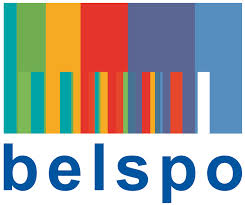|
|

|
| Home ≈ The Project ≈ Consortium ≈ Follow-up Committee ≈ Publications ≈ Events ≈ Resources ≈ Internal Resources ≈ Contact |
| The Project |
There seems to be a
consensus among economists, social scientists and policy makers that
well-being is multidimensional, so that any social policy, such as
policies aiming at reducing poverty, should be designed and evaluated
based on their implications on the many dimensions of well-being, such
as labor force participation, material consumption, health, housing
conditions, etc.
The corner stone of the project is a new measure of individual well-being that has recently been introduced in the economic literature and that is rapidly gaining popularity (Fleurbaey and Maniquet, 2011; Fleurbaey and Blanchet, 2013). This measure is grounded on the notion of equivalent income. It has three key characteristics. First, it takes account of both external (e. g., consumption of private goods) and internal (e. g., health) dimensions of the well-being of individuals. Second, it offers a promising compromise between the traditional objective approaches to well-being, which are known to fail to take the point of view of the people themselves sufficiently well into account, and subjective approaches to well-being, which are known to fail to account for the differences in the amounts of resources that are necessary to help different individuals reach the same subjective satisfaction level. Equivalent incomes, on the contrary, measure the value that different people assign to the quantities of external and internal resources they have access to. Third, equivalent incomes can be measured at the personal level, dropping the assumption of an even distribution of well-being within the household, consistently with newly developed collective theories of household decision making. The notion of well-being based on equivalent incomes requires to estimate what economists call preferences, that is, how the individuals themselves trade-off among the many dimensions of well-being, so as to evaluate what each dimension brings to his/her well-being. At least three techniques can be used to recover these preferences: a first one based on revealed preferences, i.e., on the analysis of observed choice behaviour; a second one based on stated preferences and contingent valuation; a third one based on measures of subjective satisfaction. All three techniques are known to suffer from important drawbacks. The objective of this proposal is precisely to set up a data set of a representative sample of Belgian households. The data set will be constructed in such a way that the three techniques of estimating preferences will be applied and compared, with the objective of finding the way to mix them to reach the best possible estimates. No such data set exists, neither for Belgium no for any other country. Once preferences are estimated, measures of individual well-being will be obtained and they will then be used for the analysis of the relative importance of the multiple dimensions of poverty, the gender component of poverty and inequality and the causes and remedies of socioeconomic inequalities in health.
1
- Theoretical background
In the economics
perspective, social welfare is a function of the well-being of the
individuals. Constructing a synthetic indicator of social welfare
requires taking position on how to compare well-being levels among
individuals and how to aggregate individual well-being levels. The
construction of a synthetic indicator that will be performed in this
project rests on two sets of presuppositions.
1) Income is not a good index of individual well-being. To go beyond income, several approaches have been developed in the recent economic literature. The approach that is favored in this project is that of the so-called “equivalent income”. First, it uses information about achievements in several objective dimensions. Second, it aggregates the achievements in those dimensions, individual by individual, using their own preferences. Preferences, one of the central concepts in economics, refer to how agents themselves trade-off among the different dimensions that constitute their life. Such preferences are subjective and typically differ across individuals. This approach needs information about individual’s position on many dimensions, but, most importantly, it also requires estimating individual preferences. With this project, researchers will collect the information that is necessary to make this concept of well-being (the “equivalent income”) operational. 2) Most existing poverty and inequality measurements are situated at the household level and do not take account of the possibly uneven distribution of well-being within households. There is a growing consensus, however, that a realistic modeling of household behavior must take into account preference heterogeneity within the household. In many cases, the household decision-making process cannot be explained by the restrictive unitary framework, which models the household as if it were a single decision maker: one needs collective, that is, multi-person household models. A key objective of this project is to work further in this direction. 2
- Three methods for estimating preferences
To make the concept of
equivalent income operational, one needs information about individual
preferences. There are three main methods to estimate these
preferences. The first one is based on the revealed preference
approach, i.e., on the analysis of observed choice behavior. It
consists in gathering information on individuals’ choices and their
opportunity sets. Then, preferences are estimated so as to make sense
of the observed choices as maximizing preferences over opportunity sets.
The second method to estimate preferences makes use of the answers to a “subjective satisfaction with life” (or happiness) question. These are questions like “on a scale from 1 to 7, can you express how satisfied you are with your current life?” The answers to this question are considered as a proxy for the well-being associated to the different bundles of dimensions of life, even when they cannot be chosen freely. The third method is based on stated preferences and makes use of the contingent valuation methods that are typically used in health economics and in environmental economics – precisely to measure the subjective willingness to pay for variables that cannot be bought on a market. It consists in asking people to evaluate the income they would need to earn in order to be equally well off in different hypothetical scenarios (like being in perfect health, being employed, etc) as in their current situation. With this research project, the data that will be collected will be used to compute individual indices of well-being of the “equivalent income” type. The data set will be constructed in such a way that the three approaches to estimating preferences can be computed and compared. Researchers will set up a cross-section study among a representative sample of the Belgian population. In order to identify and estimate the distribution of well-being within the household, data will be collected on households and on the different members in the household. The questionnaire will comprise a part on the general characteristics of the household and some specific parts that apply to each member and that will be asked separately. The survey instrument will be developed and tested to make sure that the variables needed to estimate the three types of preferences would be correctly captured. It will certainly contain questions on (a) consumption and time allocation; (b) subjective satisfaction with life; (c) the willingness-to-pay for a better level on the different dimensions. Vignette questions will be introduced to get a better insight into the subjective anchoring of the satisfaction question. In addition, information on the objective and subjective variables that are supposed to contribute to well-being will also be collected: health, job satisfaction, safety, social interactions. To select the relevant dimensions, researchers of the involved teams will take inspiration from the list that has been proposed by the European Statistical System. 3
- Application 1 : measuring deprivation and poverty
The multidimensional
poverty measures that will be implemented for Belgium in this project
are based on different measures of equivalent incomes.
The new multidimensional poverty measures will be extensively compared to the battery of poverty measures used in EU2020. This is not only important from a descriptive perspective, but can be important to design non-universal social policies based on means testing and targeting. 4
- Application 2 : going beyond the household level and analysis gender
inequality
The standard approach in
the microeconomic literature assumes that the household (equivalent)
income is equally shared over all the individuals inside that
household. There is plenty of empirical evidence, though, that
this assumption does not hold. Therefore, this project plans to
integrate the insights of so called collective models into measures of
poverty and inequality. Collective models take the multi-member nature
of households into account by acknowledging the individual, possibly
divergent, preferences of the household members and the corresponding
decision process that determines how the household’s resources are
allocated to its members. As such, the approach allows for an analysis
at the level of individuals instead of households.
Researchers within this project will use the newly gathered data to do a gender analysis of poverty and inequality in Belgium. Importantly, this analysis will be based on the new measure for individual well-being that is described above and that has never been used in a context with intra-household allocation. In addition to being used for the above mentioned gender analysis, collective models will also be used to improve the measurement of well-being in general. The survey will gather detailed time use and household expenditure data, in addition to information in other domains of life, where health plays a prominent role. This data set will allow the researchers to develop and apply collective models that better capture the behaviour of individuals in households. This in turn will allow to improve the measurement of equivalent income and to improve the evaluation of potential policy reforms. 5
- Application 3 : socioeconomic inequalities in health
Current measures of
socioeconomic inequalities in health do not start from a concept of
individual well-being, but focus directly on the relationship between
socioeconomic status and health. These approaches have shortcomings
when one wants to get an overall picture of the impact of health
inequalities on deprivation.
Those shortcomings can be solved if one works with an overall measure of individual well-being, capturing both income and health. This is exactly what the researchers will do in this project with the data collected in the survey : (a) to decompose inequality in well-being (i.e. equivalent incomes) in terms of the contributions of the different life dimensions, with special emphasis on health inequalities. (b) to identify the groups in society that are most threatened by cumulative deprivation and by health inequalities. (c) to compare the approach in terms of equivalent incomes with the results of the more traditional measures of socioeconomic inequality in health. (d) to analyse the decrease in well-being resulting from out-of-pocket payments when sick and analyse the link between health care expenditures and poverty risk in this broader setting.
Here are the expected
results, in terms of new knowledge (that will be made available to
society and the scientific community) and in terms of the result of the
survey.
Result 1 : The data base. It will be freely accessible (burnt on DVD’s) to all researchers who request them. Result 2 : Comparison of the different methods to estimate preferences and identification of a better method. This will give rise to scientific contributions in several journals active in statistical methods in economics, social index measurement, inequality, poverty, and gender issues. Result 3 : Application 1: poverty measurement. This will give rise to scientific publications on poverty and the methodology of poverty measurement. This will also yield to communication to policy makers and the civil society in Belgium. Researchers working on this project will also derive policy recommendations from the comparison of the efficacy of different policies. These results will help coordinating the different institutions involved in anti-poverty policies, as these results will allow one to develop a combined view on the many dimensions of poverty and well-being (such as housing, health, transfers, etc.) with a particular emphasis on child poverty. Result 4 : Application 2: intra-household. This will give rise to scientific publications on the econometrics of collective household models, as well as the gender aspects of well-being distributions. This will also give rise to communication of the results to policy makers and the civil society. The results will be relevant for 1) a more individualized social security system, and 2) a better policy design taking child well-being into account. Result 5 : Application 3: health. This will give rise to scientific publications in health economics, as well as, again, to communication towards Belgian actors in the health sector. The results will be useful to evaluate and improve the design of social protection mechanisms in the health insurance system, such as maximum billing and omnio. The results could also help integrate health care system into broader social policies. |
 |  |  |  |  |  |  |
